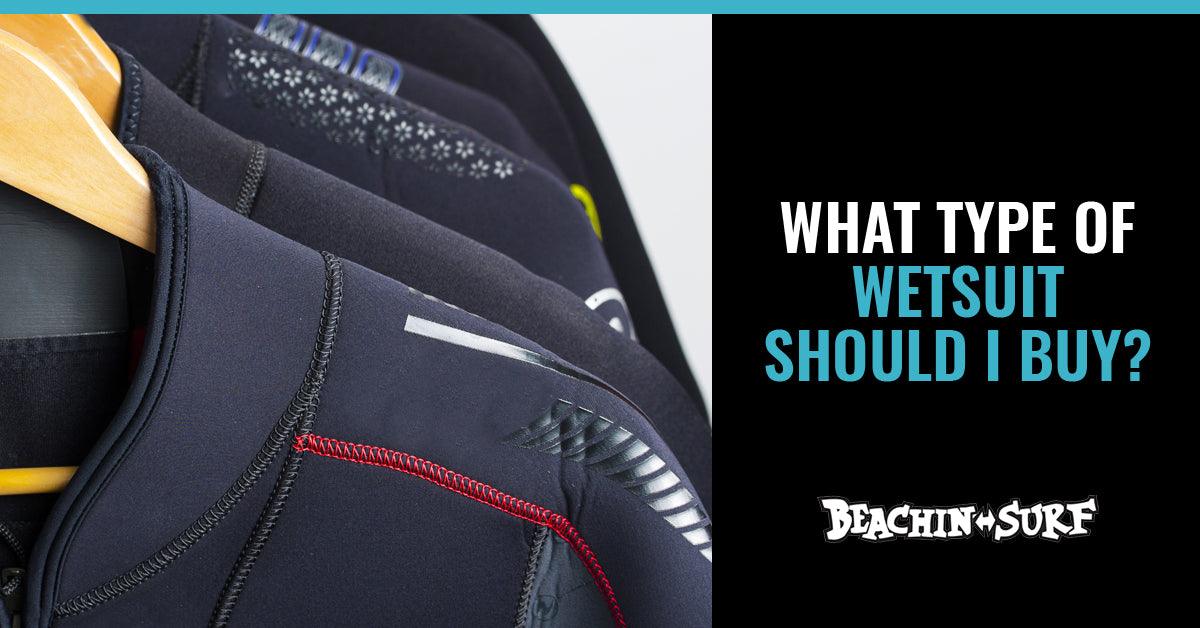
Wetsuits can be bought with a few different purposes and seasons in mind.
In order to make your surfing experience a more pleasant one, then choosing the right wetsuit is just about as important as choosing your actual surfboard.
Here are some important factors to consider when buying the right wetsuit before catching any waves.
- How does a wetsuit work?
- Warmth and thickness of the suit
- Type of zipper
- Freedom of movement
- Different wetsuit styles
Understanding the basic function of a wetsuit is important before you choose the best wetsuit for your surfing experience.
The wetsuit will usually trap a thin layer of water between the suit material and your body. Your body heat will warm this water to a comfortable temperature.
Most wetsuits are made from a material called neoprene which helps to keep your body warm and dry.
It’s a synthetic elastic rubber with great insulation properties. Neoprene can be lightweight and buoyant.
The Thickness and Warmth of the Wetsuit
The temperature of the water in which you plan to surf is the most important factor in determining the thickness and internal lining of the wetsuit you should wear.
In summer a long or short sleeved vest will keep the sunburn under control, keep the wind off you and generally allow you to surf for longer.
This also helps with any stingers that can be about at that time of year.
Remember, summer water temps (southern hemisphere only) from December to March are approximately 21-24 degrees Celsius, with nice April days included.
Spring suits are the Autumn and late Spring wetsuit being mainly 2mm and many are sealed (see explanation of terms below).
Having a wetsuit that is top and bottom combined (short or long sleeved with short legs ie above the knee) allows for much less water flow through the wetsuit.
Therefore, your body becomes much more efficient at keeping you warm. On the cool mornings in autumn or very late spring, a good spring suit is a must.
A good neck seal is a good guide to how this wetsuit will work and whether it is the right size for you.
Steamers are the warm ones. You will need a steamer to get you through winter.
There are many kinds though, so we will keep it simple. Remember the neck seal principle is the key.
Short Sleeve – always 2mm, nearly always sealed. This is a wetsuit for surfers that have the rest of the year covered.
You will use it in late autumn, very early winter and late spring. Remember it is short sleeve and 2mm.
Long Sleeve – most steamers for NSW are 3 x 2 sealed with various liners to help with insulation.
There are many creative technical products here and a good steamer will allow you to surf for longer in the cold times when the waves are often at their best.
In short, to get yourself through the year you will need the following:
- Rash vest short or long sleeve for the warmest days or overseas trips
- A long or short sleeve vest for high summer conditions
- A spring suit for autumn and very late spring
- A steamer for winter that will keep you warm on those cold days.
One last thing. Zips
Back zips represent easy entry by the user but can leak more water due to the base of wetsuit zippers being webbing ie like car seat belts, the neck will always pull down when duck diving etc
Chest Zip represents a best user “ease of entry” with best neck seal. This is where most steamers are.
Zip free for experienced users that usually have had several wetsuits and prefer ultimate flex and performance from their wetsuits.
Terminology is as follows:
Neoprene: Wetsuit rubber of various thicknesses and stretch levels
2mm refers to the thickness of the wetsuit rubber, ie Neoprene (the technical name of wetsuit rubber).
3 x 2 for steamers meaning 3mm thickness in the body and 2mm around the shoulders and arms.
Vests are usually 0.5 to 1.5mm thick.
Spring suits are 2mm thick.
Linings are internally adhered layers that increase the fit, feel and effectiveness of the wetsuit at keeping you warmer. Your body does the real work, lining just helps keep your body heat contained.
Sealed refers to the seams and therefore the stopping of water exchange through the seams.
Sealing of wetsuits is a must for keeping the water out and keeping you warm when it is cold.
The above is really a NSW view so if you are surfing in the deep south or far north of Sydney, or other parts of the country, there will be variations you will need to take into account.
Remember, wetsuits are specific to the area and water temperature in which you will use them..
If you are looking for a trusted surf accessories supplier in Australia, then look no further than Beachin Surf. We have a wide range of surfboards and accessories to meet all your surfing needs. Please call us today on (02) 4396 5159 or email us at customerservice@beachinsurf.com.au
